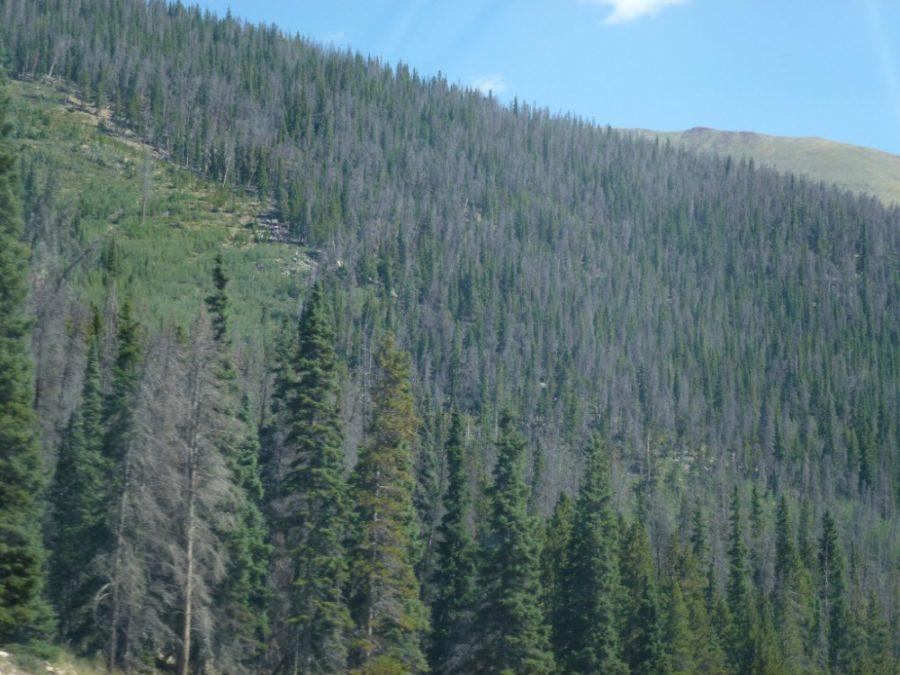A new study led by researchers at the University of Arizona found that the increase in rainfall in the western U.S. caused a decline in tree growth.
Matt Dannenberg, assistant professor in the Department of Geographical and Sustainability Sciences at the University of Iowa and lead author on the study, explained the research process.
“A warmer atmosphere can hold more water vapor, which intensifies our water cycle,” Dannenberg said in an email interview. “Based on precipitation data from 1901-present, year-to-year precipitation variability has increased quite substantially in many parts of the U.S., particularly in the Southwest.”
The purpose of the research was to find the effects of the rise in variability for the sake of American forests. To conduct the study, researchers used tree ring widths from over 1,300 sites throughout the U.S. to observe the linear and nonlinear forms of the correlation among precipitation and growth. Researchers also observed the tree growth response particularly to exceedingly dry and wet years.
Researchers found the growth of numerous tree types, such as ponderosa pine, Douglas-fir and piñon pine located in the Southwest and bur oak located in the Midwest react more intensely to dry years compared to wet years. Drops in tree growth during drought are not entirely offset by rises in wet years.
This means rising precipitation variability may result in long-lasting growth declines, even if there’s no difference in regular precipitation.
Throughout the previous 100 years in the Southwest, it’s estimated about a two-fold rise in the probability of years with extremely little growth, yet no difference in probability of high growth.
Dannenberg thinks the next step as climate change persists is to comprehend the other aspects of climate change to manage forests. These aspects include warmer temperatures, increased carbon dioxide concentrations (which could possibly stimulate photosynthesis and/or water-use efficiency), reduced snowpack and changes in the lifecycles of forest pests. It’s still unclear how these changes will affect forests.
William Smith, assistant professor in the School of Natural Resources and the Environment at the UA and senior author of the study, provided insight on the study.
“We first worked with the long-term climate observations,” Smith said over email. “Using computer programming that allows us to quickly process large datasets, we explored how rainfall variability has changed over the last 100 years over the full U.S. region. We then worked with thousands of tree-ring records to determine whether or not trees exhibit any sensitivity to changes in precipitation variability.”
The study found that precipitation variability altered drastically through the southwest region, particular dominant tree species are vulnerable to these alterations.
According to Smith, the work integrated long-term climate records, model projections and a large synthesis of tree-ring observations.
Smith said he believed the next step is to incorporate satellite observations of tree, grassland and shrub growth to affirm the study’s original findings and to observe different sensitivities to changing precipitation extremes across these functional types. This can give insight on how these systems will shift with climate change.
RELATED: Regents’ Professor Profiles: Ecohydrology expert David D. Breshears
More experiments are still being conducted, according to Smith.
“We are starting a large experimental manipulation in the Santa Rita Experimental Range so that we can experimental increase precipitation variability and then measure how the ecosystem changes,” Smith said in an email interview.
Smith advised more research to be conducted in order to prevent harmful results of climate change.
Follow Gabriella Cobain on Twitter








